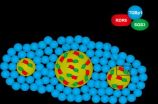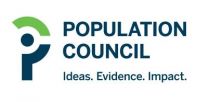(Press-News.org) DURHAM, N.C. -- Duke researchers have found a new type of neuron in the adult brain that is capable of telling stem cells to make more new neurons. Though the experiments are in their early stages, the finding opens the tantalizing possibility that the brain may be able to repair itself from within.
Neuroscientists have suspected for some time that the brain has some capacity to direct the manufacturing of new neurons, but it was difficult to determine where these instructions are coming from, explains Chay Kuo, M.D. Ph.D., an assistant professor of cell biology, neurobiology and pediatrics.
In a study with mice, his team found a previously unknown population of neurons within the subventricular zone (SVZ) neurogenic niche of the adult brain, adjacent to the striatum. These neurons expressed the choline acetyltransferase (ChAT) enzyme, which is required to make the neurotransmitter acetylcholine. With optogenetic tools that allowed the team to tune the firing frequency of these ChAT+ neurons up and down with laser light, they were able to see clear changes in neural stem cell proliferation in the brain.
The findings appeared as an advance online publication June 1 in the journal Nature Neuroscience.
The mature ChAT+ neuron population is just one part of an undescribed neural circuit that apparently talks to stem cells and tells them to increase new neuron production, Kuo said. Researchers don't know all the parts of the circuit yet, nor the code it's using, but by controlling ChAT+ neurons' signals Kuo and his Duke colleagues have established that these neurons are necessary and sufficient to control the production of new neurons from the SVZ niche.
"We have been working to determine how neurogenesis is sustained in the adult brain. It is very unexpected and exciting to uncover this hidden gateway, a neural circuit that can directly instruct the stem cells to make more immature neurons," said Kuo, who is also the George W. Brumley, Jr. M.D. assistant professor of developmental biology and a member of the Duke Institute for Brain Sciences. "It has been this fascinating treasure hunt that appeared to dead-end on multiple occasions!"
Kuo said this project was initiated more than five years ago when lead author Patricia Paez-Gonzalez, a postdoctoral fellow, came across neuronal processes contacting neural stem cells while studying how the SVZ niche was assembled.
The young neurons produced by these signals were destined for the olfactory bulb in rodents, as the mouse has a large amount of its brain devoted to process the sense of smell and needs these new neurons to support learning. But in humans, with a much less impressive olfactory bulb, Kuo said it's possible new neurons are produced for other brain regions. One such region may be the striatum, which mediates motor and cognitive controls between the cortex and the complex basal ganglia.
"The brain gives up prime real estate around the lateral ventricles for the SVZ niche housing these stem cells," Kuo said. "Is it some kind of factory taking orders?" Postdoctoral fellow Brent Asrican made a key observation that orders from the novel ChAT+ neurons were heard clearly by SVZ stem cells.
Studies of stroke injury in rodents have noted SVZ cells apparently migrating into the neighboring striatum. And just last month in the journal Cell, a Swedish team observed newly made control neurons called interneurons in the human striatum for the first time. They reported that interestingly in Huntington's disease patients, this area seems to lack the newborn interneurons.
"This is a very important and relevant cell population that is controlling those stem cells," said Sally Temple, director of the Neural Stem Cell Institute of Rensselaer, NY, who was not involved in this research. "It's really interesting to see how innervations are coming into play now in the subventricular zone."
Kuo's team found this system by following cholinergic signaling, but other groups are arriving in the same niche by following dopaminergic and serotonergic signals, Temple said. "It's a really hot area because it's a beautiful stem cell niche to study. It's this gorgeous niche where you can observe cell-to-cell interactions."
These emerging threads have Kuo hopeful researchers will eventually be able to find the way to "engage certain circuits of the brain to lead to a hardware upgrade. Wouldn't it be nice if you could upgrade the brain hardware to keep up with the new software?" He said perhaps there will be a way to combine behavioral therapy and stem cell treatments after a brain injury to rebuild some of the damage.
The questions ahead are both upstream from the new ChAT+ neurons and downstream, Kuo says. Upstream, what brain signals tell ChAT+ neurons to start asking the stem cells for more young neurons? Downstream, what's the logic governing the response of the stem cells to different frequencies of ChAT+ electrical activity?
There's also the big issue of somehow being able to introduce new components into an existing neuronal circuit, a practice that parts of the brain might normally resist. "I think that some neural circuits welcome new members, and some don't," Kuo said.
INFORMATION:
In addition to Paez-Gonzalez, Asrican, and Kuo, Erica Rodriguez, a graduate student in the neurobiology training program, is also an author. This research was supported by the National Institutes of Health, David & Lucile Packard Foundation, and George Brumley Jr. Endowment.
CITATION: "Identification of distinct ChAT+ neurons and activity-dependent control of postnatal SVZ neurogenesis," Patricia Paez-Gonzales, Brent Asrican, Erica Rodriguez, Chay T. Kuo. Nature Neuroscience Advance Online, June 1, 2014. DOI: 10.1038/nn.3734
Neuron tells stem cells to grow new neurons
Researchers identify first piece of new brain-repair circuit
2014-06-02
ELSE PRESS RELEASES FROM THIS DATE:
Hypnosis extends restorative slow-wave sleep
2014-06-02
Sleeping well is a crucial factor contributing to our physical and mental restoration. SWS in particular has a positive impact for instance on memory and the functioning of the immune system. During periods of SWS, growth hormones are secreted, cell repair is promoted and the defence system is stimulated. If you feel sick or have had a hard working day, you often simply want to get some good, deep sleep. A wish that you can't influence through your own will – so the widely held preconception.
Sleep researchers from the Universities of Zurich and Fribourg now prove ...
Poor sleep equal to binge drinking, marijuana use in predicting academic problems
2014-06-02
DARIEN, IL – A new study shows that college students who are poor sleepers are much more likely to earn worse grades and withdraw from a course than healthy sleeping peers.
Results show that sleep timing and maintenance problems in college students are a strong predictor of academic problems even after controlling for other factors that contribute to academic success, such as clinical depression, feeling isolated, and diagnosis with a learning disability or chronic health issue. The study also found that sleep problems have about the same impact on grade point average ...
NUS scientists demonstrate rare chemical phenomenon to harvest solar energy
2014-06-02
A team of international scientists led by Professor Jagadese J Vittal of the Department of Chemistry at the National University of Singapore's (NUS) Faculty of Science has successfully unraveled the chemical reaction responsible for propelling microscopic crystals to leap distances up to hundreds of times their own size when they are exposed to ultraviolet (UV) light.
This popping effect, akin to the bursting of popcorn kernels at high temperatures, demonstrates the conversion of light into mechanical motion. It is the first instance of a "photosalient effect" driven ...
Half of pregnant women who have hypertension and snore unknowingly have a sleep disorder
2014-06-02
ANN ARBOR, Mich. — 1 in 2 hypertensive pregnant women who habitually snore may have unrecognized obstructive sleep apnea, a sleeping disorder that can reduce blood oxygen levels during the night and that has been linked to serious health conditions, new University of Michigan-led research shows.
One in four hypertensive pregnant women who don't snore also unknowingly suffer from the sleeping disorder, according to the study that appears in the British Journal of Obstetrics and Gynecology.
"We know that habitual snoring is linked with poor pregnancy outcomes for both ...
Marijuana use is associated with impaired sleep quality
2014-06-02
DARIEN, IL – A new study suggests that marijuana use is associated with impaired sleep quality.
Results show that any history of cannabis use was associated with an increased likelihood of reporting difficulty falling asleep, struggling to maintain sleep, experiencing non-restorative sleep, and feeling daytime sleepiness. The strongest association was found in adults who started marijuana use before age 15; they were about twice as likely to have severe problems falling asleep (odds ratio = 2.28), experiencing non-restorative sleep (OR = 2.25) and feeling overly sleepy ...
Even at infancy, human can visually identify objects that stand out: York U study
2014-06-02
TORONTO, June 2, 2014 — Even by three months of age, babies are visually able to locate objects that stand out from a group, a York University study has found.
"For example, an infant can pick a red umbrella in a sea of grey ones," says Psychology Professor Scott Adler in the Faculty of Health, who led the research. "This indicates that babies at a very young age are able to selectively extract information from the environment, just like adults."
Previously it was unknown how early this form of visual attention developed in infants. For the current study, both infants ...
MRSA rates varied dramatically across geographic areas
2014-06-02
LOS ANGELES – (June 2, 2014) – The rates of community-onset methicillin-resistant Staphylococcus aureus (CO-MRSA) varied dramatically among academic medical centers in California, New York, Illinois and North Carolina, suggesting there is not a uniform change in the "national epidemic" of the "superbug" that has generated extensive public health concern over the past decade, according to a new study.
The study, published online ahead of print in the journal Clinical Infectious Diseases, surveyed hospital records of 4,171 cases of MRSA and MRSA-related infections between ...
Enzyme used in antidepressants could help researchers develop prostate cancer treatments
2014-06-02
LOS ANGELES (May 30, 2014) – An international team of scientists including researchers at the Cedars-Sinai Samuel Oschin Comprehensive Cancer Institute and the University of Southern California found that an enzyme commonly used as a target for antidepressants may also promote prostate cancer growth.
The study, published in the Journal of Clinical Investigation, found that suppressing the enzyme monoamine oxidase A, or MAOA, may reduce or even eliminate prostate tumor growth and metastasis in laboratory mice. The finding could open the door for physicians to use antidepressants ...
Virus rounds up enzymes, disarms plant
2014-06-02
University of Tokyo researchers have described how a plant-virus protein suppresses an important plant defense mechanism that remembers viral genetic information, providing a new target for developing the first-ever chemical against plant viruses that globally cause more than $60 billion of crop losses each year.
Invading viruses carry genetic material that hijacks the host cell's machinery, fooling it into producing proteins and new viruses. All cells from fungi to plants and mammals employ RNA silencing, a cellular process essential for the regulation of gene expression ...
New Population Council research presented at 13th ESC Annual Congress
2014-06-02
LISBON, PORTUGAL (31 May 2014) – This week, the Population Council presented new research at the 13th Congress of the European Society of Contraception and Reproductive Health. Presentations included a pharmacokinetic analysis of the Council's investigational one-year contraceptive vaginal ring containing Nestorone® and ethinyl estradiol, and its investigational male contraceptive implant MENT®, as well as new approaches to "green contraception," including strategies to ensure that future contraceptive technologies are both effective and protect the environment.
"The ...
LAST 30 PRESS RELEASES:
Exploring how patients feel about AI transcription
Category ‘6’ tropical cyclone hot spots are growing
Video: Drivers struggle to multitask when using dashboard touch screens, study finds
SLU research shows surge in alcohol-related liver disease driving ‘deaths of despair’
Rising heat reshapes how microbes break down microplastics, new review finds
Roots reveal a hidden carbon pathway in maize plants
Membrane magic: FAMU-FSU researchers repurpose fuel cells membranes for new applications
UN Member States pledge to increase access to diagnosis and inhaled medicines for the 480 million people living with COPD
Combination therapy shows potential to treat pediatric brain cancer ATRT
Study links seabird nesting to shark turf wars in Hawai‘i
Legal sports betting linked to sharp increases in violent crime, study finds
Breakthrough AI from NYUAD speeds up discovery of life-supporting microbes
New Eva Mayr-Stihl Foundation funding initiative boosts research at University of Freiburg on adaptation of forests to global change
The perfect plastic? Plant-based, fully saltwater degradable, zero microplastics
Bias in data may be blocking AI’s potential to combat antibiotic resistance
Article-level metrics would provide more recognition to most researchers than journal-level metrics
Satiety’s little helper: Protein that supports appetite regulating protein identified
UF dives deep into predicting storm damage with computer models
A stormy ocean voyage yields insights on the global carbon cycle
Scientists identify first non-coding gene that controls cell size
Demonstration of altermagnetism in RuO₂ thin films -- A new magnetic material for the AI era
Penn researchers awarded $25M to conduct trial using smartphones to fight heart disease
PCORI awards funding for new patient-centered healthcare research
Exploring the origins of the universe: 145 low-noise amplifiers complete ALMA telescopes
Empress cicada wings help illuminate molecular structure
Using sound waves to detect helium
Time burden in patients with metastatic breast and ovarian cancer from clinic and home demands
Researchers discover bias in AI models that analyze pathology samples
Scientists ID potential way to prevent brain injuries from triggering Alzheimer's
MASTER 2nd Open Call: Execution period kick-off
[Press-News.org] Neuron tells stem cells to grow new neuronsResearchers identify first piece of new brain-repair circuit





